In the last post, we explained what a project life cycle is with the help of short tips. In this post, we’ll explore various types of project life cycles to better understand how the life cycle of a project works and how best we can use it.
Selecting a Project Life Cycle
A project team has to select a project life cycle. Selecting a project life cycle depends upon the type, structure, or requirement of the team. Project life cycles vary from predictive on one end, to agile on the other end, with more iterative or incremental cycles in the middle.
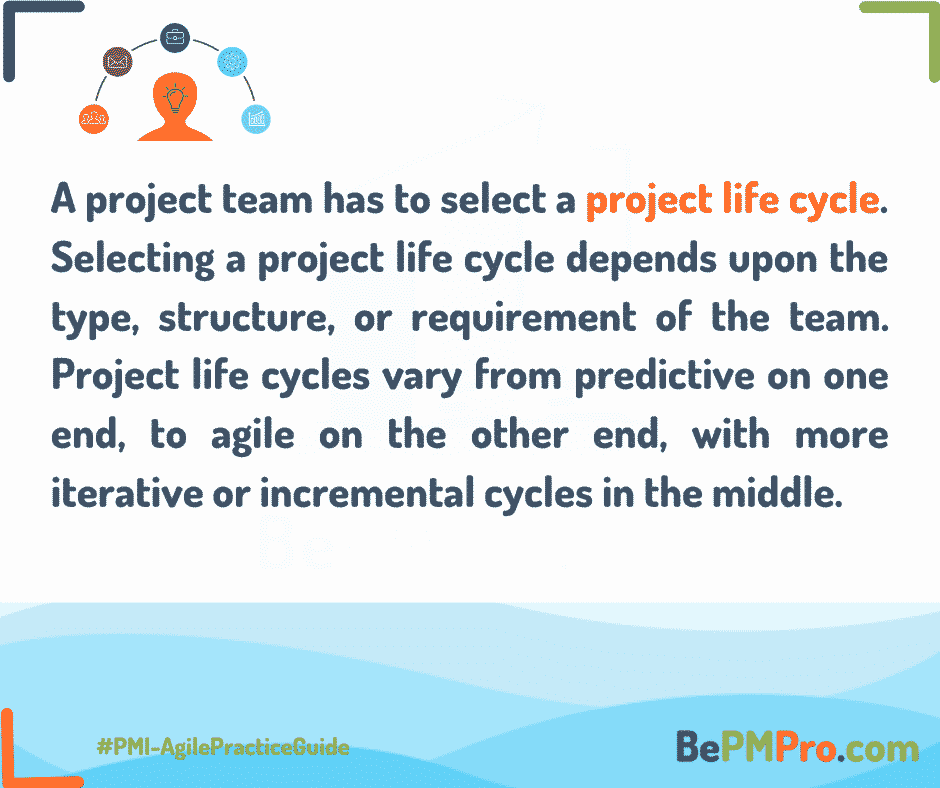
Types of Project Life Cycles
In this article, we’re going to explain 4 types of project life cycles. These life cycles can be used independent of each other or can be combined with each other based on your needs.
Predictive life cycle is used when requirements are fixed and known. The detailed plan is created at the start. It is performed once for
PMI Agile Practice Guide
the life time of a project and gives a single delivery at the end. The focus is on managing the cost.
Predictive Life Cycle
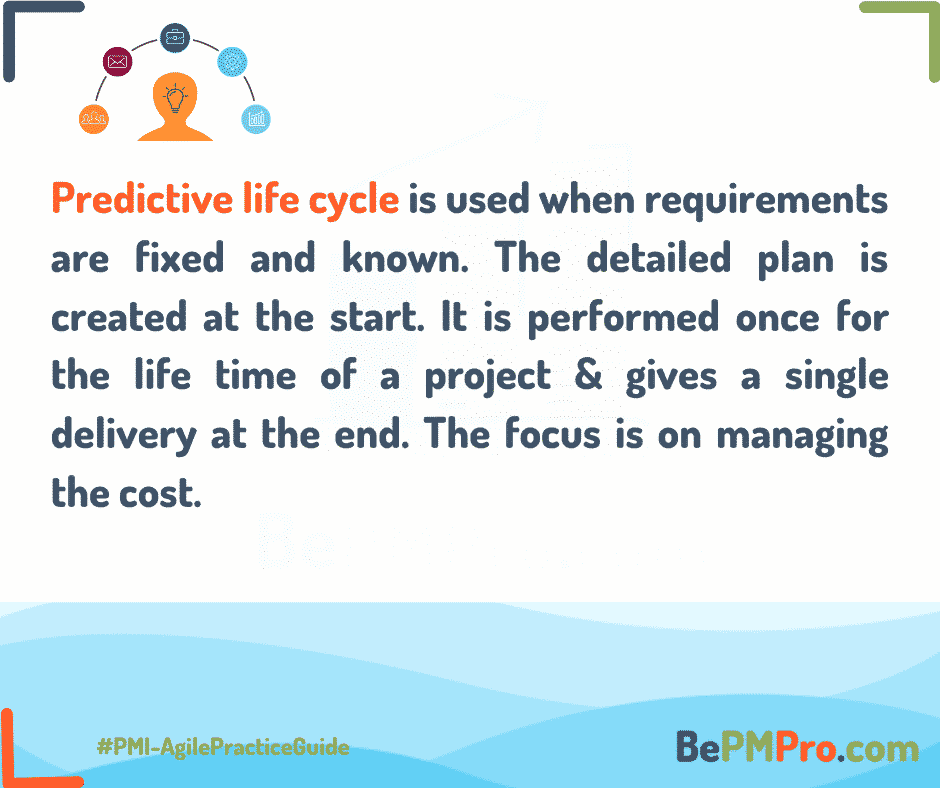
Iterative Life Cycle
Iterative life cycle is used when requirements are dynamic and complex. Time boxing is used on an iteration to gather insights and then reworked. The activities are repeated until correct and gives a single delivery at the end. The focus is correctness of the output.
PMI Agile Practice Guide
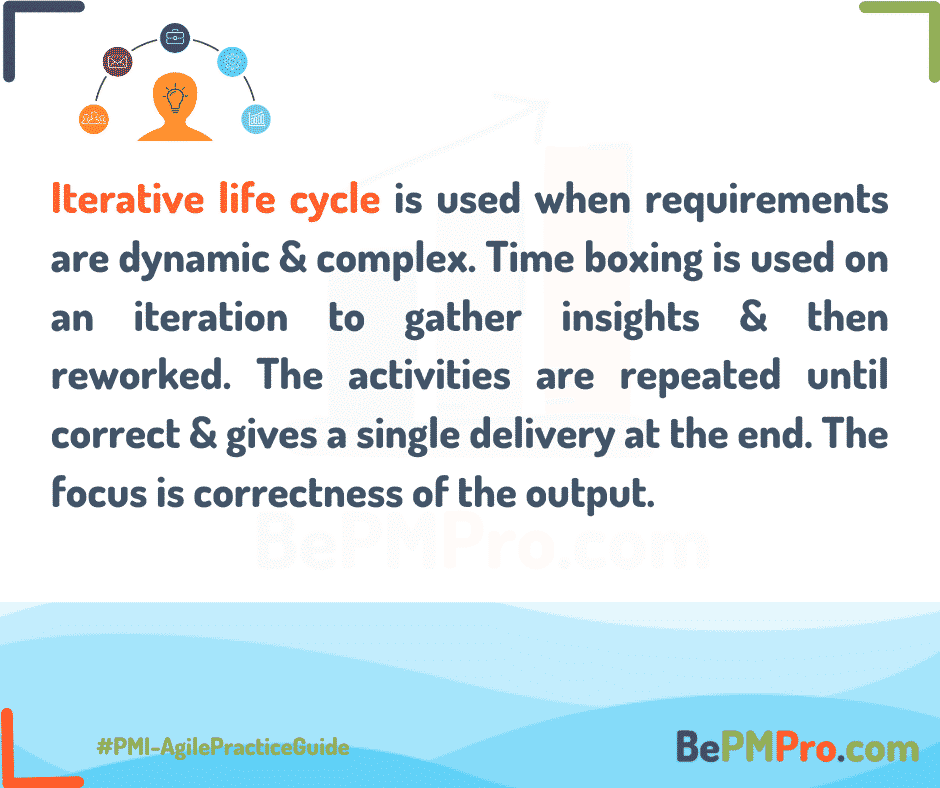
Incremental Life Cycle
Incremental life cycle is used when requirements are changing daily. Time boxing is used on an iteration to gather insights & then reworked. The activities are performed once for an increment 8: gives frequent smaller
PMI Agile Practice Guide
usable deliveries. The focus is on speed.
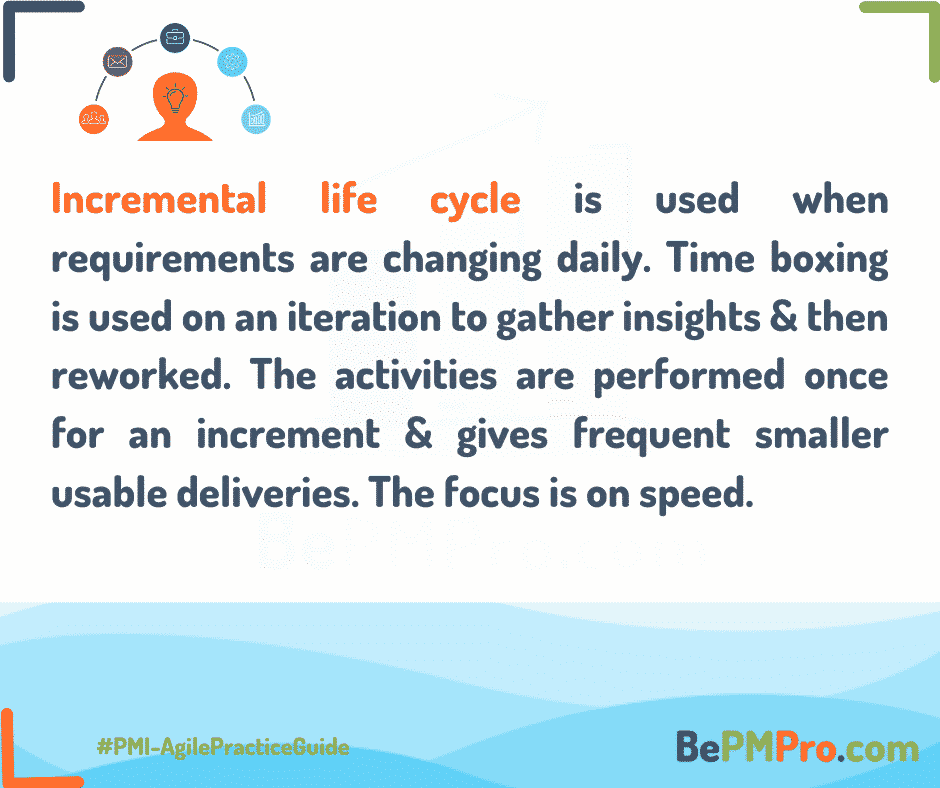
Agile Life Cycle
Agile life cycle is both iterative 8: incremental in nature. The team expects requirements to change. The activities are repeated for a delivery until correct and gives frequent small usable deliveries. The focus is on customer
PMI Agile Practice Guide
value via continuous feedback.
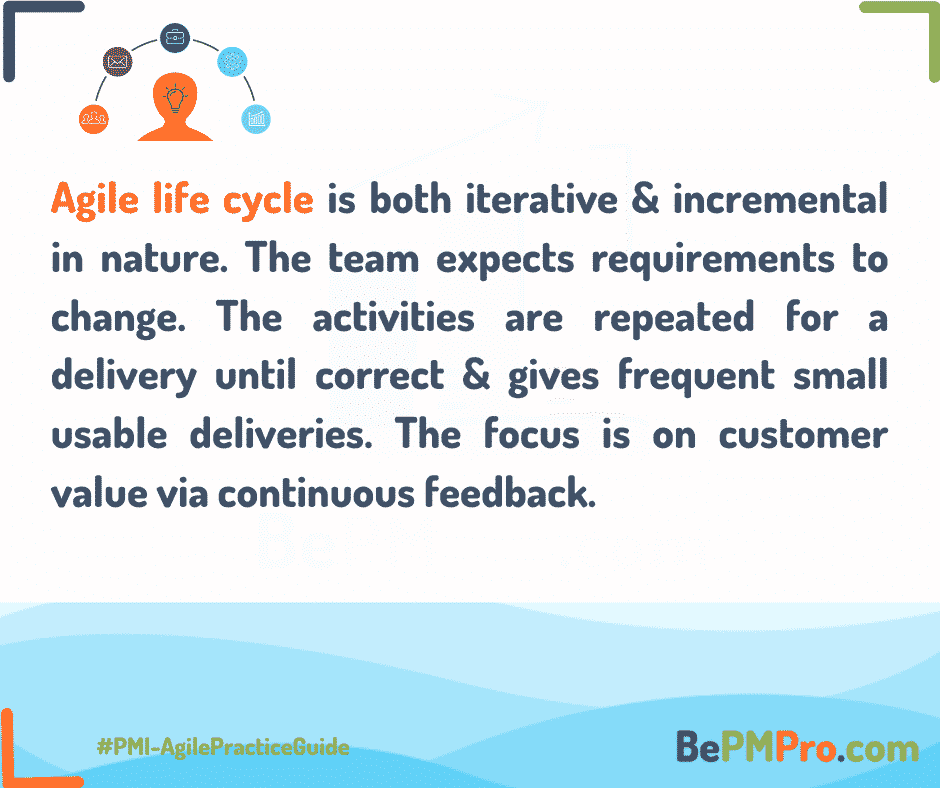
Iteration Based Agile vs. Flow Based Agile
Iteration Based Agile uses time boxes of same size for each iteration & works in iterations. Flow Based Agile uses varying sized time boxes
PMI Agile Practice Guide
based on number of features and team pulls features from backlog based on capacity. Both result in working tested features.
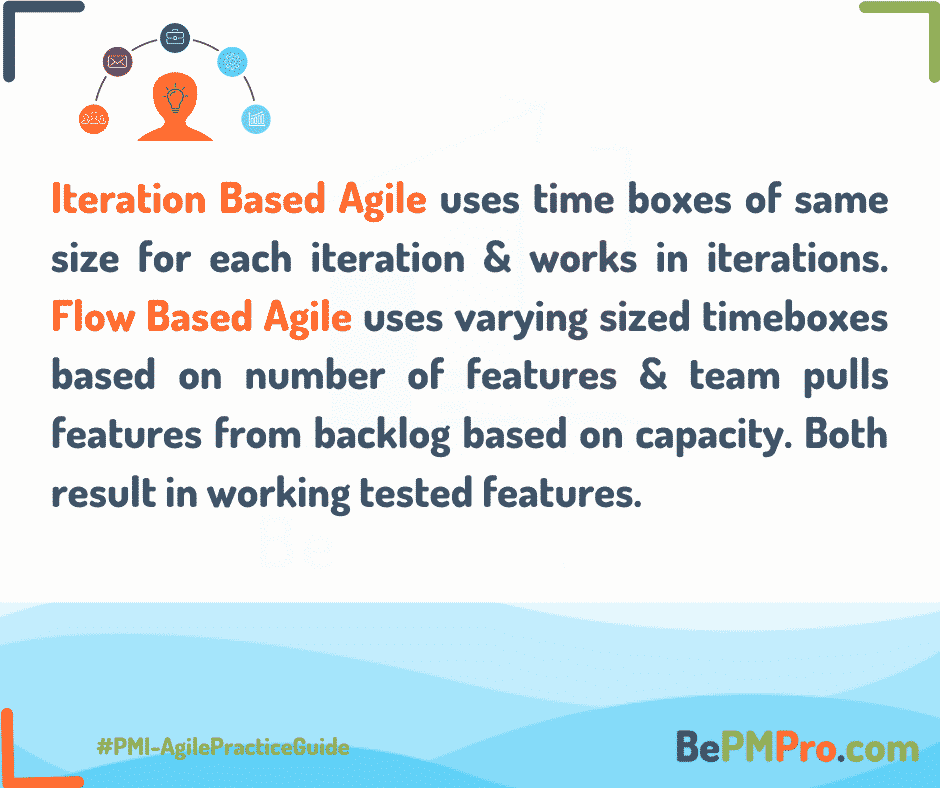
Hybrid Life Cycle
Hybrid Life Cycle combines different approaches based on the requirements of team or project. It’s not necessary to use a single approach for entire project. A combination of predictive, iterative, incremental and/ or agile approaches is called hybrid cycle.
PMI Agile Practice Guide
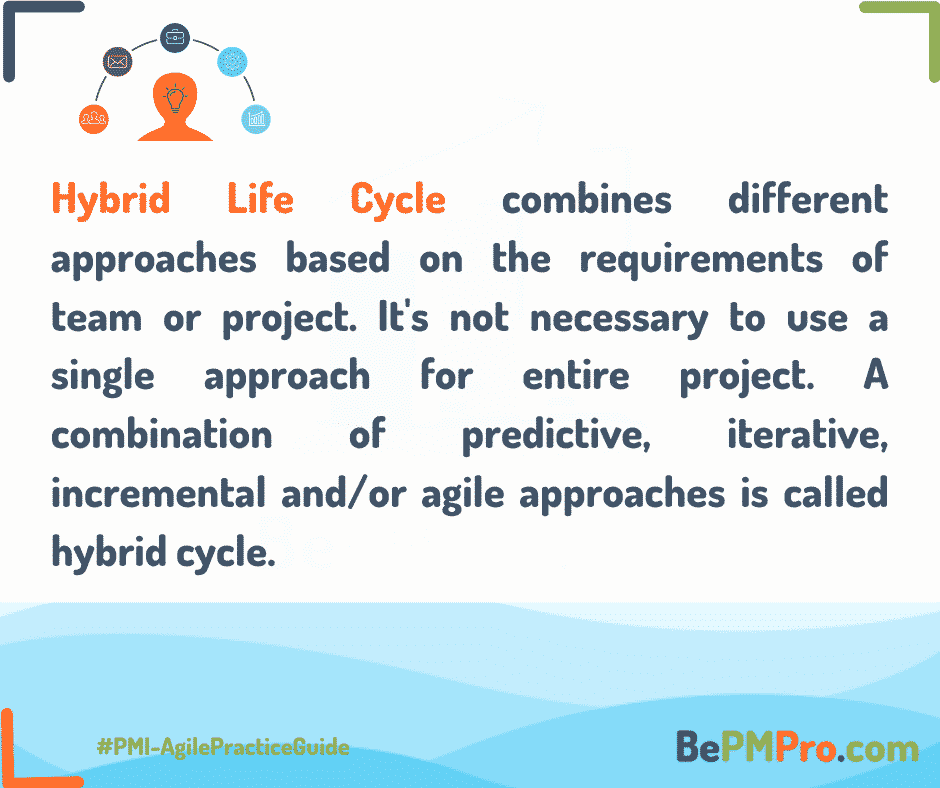
Types of Project Life Cycles Infographics
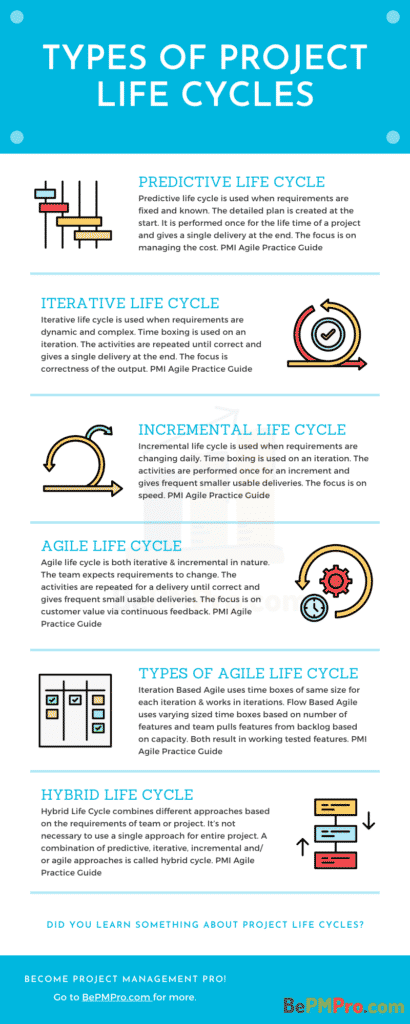

You must log in to post a comment.